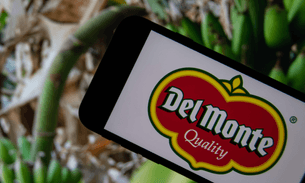
Amazon fires are soaring again – but forest loss is down. What’s going on?
“There is no climate security for the world without a protected Amazon,” Luiz Inácio Lula da Silva (Lula) told the Cop27 climate conference in November 2022, weeks before being sworn in as president of Brazil.
Since taking office in January 2023, Lula seems to have followed up those words with effective action: in June last year, he unveiled a headline-grabbing plan to end Amazon deforestation in Brazil by 2030. In his first year in power, the rate of forest loss in the region halved.
But in the last few months, typically the peak of the annual fire season, the Amazon has seen record blazes. Data from Brazil’s National Institute for Space Research (INPE) showed more than 38,000 fires in the Amazon last month – the highest August figure for 14 years. That followed nearly 11,500 in July, the highest in almost two decades. And figures for September (more than 23,000 in the first 11 days) are already close to surpassing last year’s.
Last month, fires spread from the Amazon to Brasília and São Paulo. Flights were grounded and schools shut down.
So deforestation is decreasing while fires are on the rise. What’s going on?
The first thing to understand is that deforestation (generally defined as the permanent conversion of forest for another use) has various different causes, such as logging, road-building, mining and farming. Many of these are being tackled in the Brazilian Amazon – and fires are now accounting for a larger share of overall forest loss.
The Brazilian authorities have attributed the alarming rise in forest fires to global heating and the El Niño weather pattern, which both exacerbated early-year droughts whose effects are still being felt. However, experts suspect human activity could also be a key driver.
A recent analysis by the Amazon Environment Research Institute, an NGO, shows that a vast majority of the fires in August occurred in agricultural areas, raising suspicion among environmentalists that some of the activity may have been intentional.
 An area of the Amazon deforested by illegal fire in Labrea, Amazonas State, last month
Evaristo Sa / AFP via Getty
An area of the Amazon deforested by illegal fire in Labrea, Amazonas State, last month
Evaristo Sa / AFP via Getty
Paula Vargas, Brazil programme director at Amazon Watch, an NGO, told TBIJ that ranchers often start fires deliberately, which is illegal in Brazil.
“There are ongoing investigations by Brazilian authorities into whether farmers yet again organised a ‘fire day’ this year,” said Vargas. Four people have been arrested in connection with starting the fires that spread to São Paulo.
Vargas said the administration of Jair Bolsonaro, Lula’s predecessor, left a legacy of criminal activities such as land invasions and deforestation in the Amazon.
Bolsonaro cut funding for environmental law enforcement and actively encouraged the conversion of forest into pasture to raise cattle. He oversaw year-on-year increases in deforestation from 2019-2022.
Global danger
Writing in the journal Nature Ecology & Evolution, a group of international academics warn of the dangers of uncontrolled wildfires for forest degradation, carbon emissions, biodiversity loss and damage to Indigenous communities.
All this forest destruction and degradation has severe consequences for the global climate. The Amazon forest has historically acted as a carbon sink, storing potential emissions in its trees, soils and vegetation. But rampant destruction in recent years means that in some parts, the forest now releases more carbon than it absorbs.
Key to halting forest loss, Vargas added, is support for Indigenous people, who are recognised as the best forest protectors and safeguard around 80% of the planet’s biodiversity.
Kátia Silene Akrãtikatêjê, the first female leader of the Gavião community, who claimed their land was being encroached on by farmers, told TBIJ in 2022: “We Indigenous peoples are being surrounded, suffocated on an island.”
Around the time Bolsonaro came to office, TBIJ started investigating the links between deforestation and cattle ranching, tracing vast environmental devastation to products sold on high street in Europe and the UK. Using data shared exclusively by Trase, a supply chain research project, TBIJ first reported that up to 5,800 sq km of forest was being cleared in the Amazon and other areas every year for cattle ranching.
And last year, TBIJ revealed that to meet foreign demand, at least 17,000 sq km – more than 800 million trees – had been lost in three of the Brazilian Amazon’s top beef-producing states alone in the six years to 2022.
Back in 2019, the first year of Bolsonaro’s presidency, images of the Amazon ablaze shocked the world, even drawing a threat of trade action from French president Emmanuel Macron. (Though not from Boris Johnson, whose opposition to the idea earned him personal thanks from Bolsonaro, TBIJ later revealed.)
The danger now is that the Amazon is once again on fire, presided over by Bolsonaro’s successor. And scientists have warned that, despite Lula’s deforestation efforts, recent fires could weaken the public perception of his commitment to protecting the region.
The Cop30 conference next year, held in the Brazilian city of Belém, will bring renewed international scrutiny. As the president said himself, the survival of both Brazil and the world depend on the preservation of the Amazon.
Main image: A bull is seen in front of a house surrounded by fire from illegal burning in the Amazon earlier this month. Credit: Michael Dantas / AFP via Getty Images
Reporter: Grace Murray
Environment Editor: Robert Soutar
Deputy editor: Chrissie Giles
Editor: Franz Wild
Production editor: Alex Hess
Fact checker: Somesh Jha
TBIJ has a number of funders, a full list of which can be found here. None of our funders have any influence over editorial decisions or output.
-
Area:
-
Subject:




